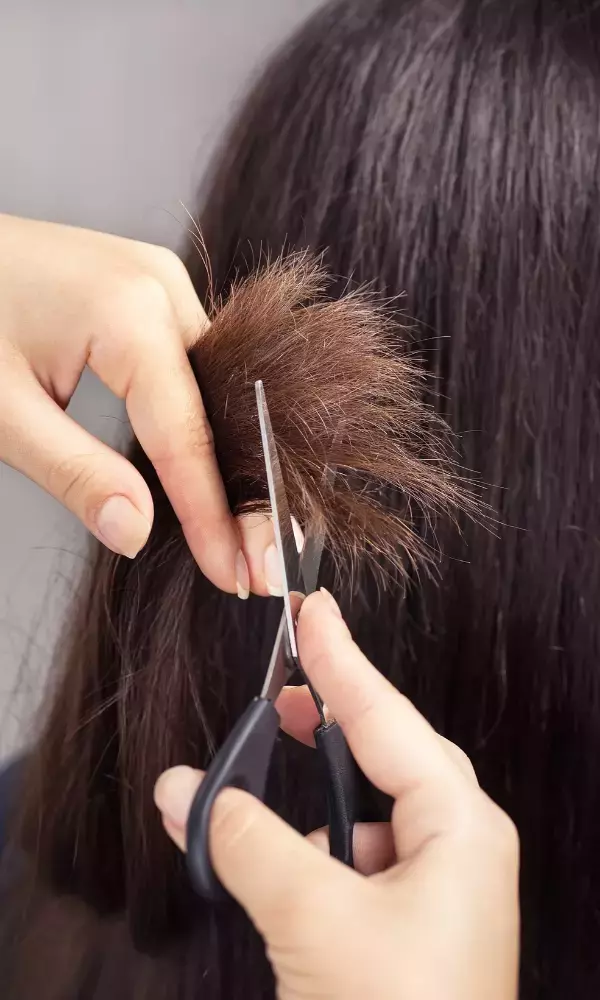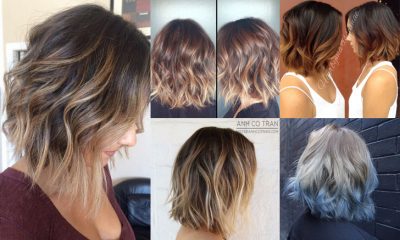
At my latest hair appointment, my colorist was stunned by how much my hair had grown since September. While it’s not always ideal for maintaining highlights, I’m thrilled with my hair’s recent growth. For years, I experimented with every possible remedy—vitamins, special shampoos, castor oil massages, aloe treatments—to speed up hair growth. Finally, I’ve discovered several strategies that have made a noticeable difference in my scalp health and hair growth.
However, let’s clear up some common misconceptions. Genetics, hormones, age, and overall health primarily determine hair growth. No product can magically grow your hair faster if these factors aren’t in your favor. However, adopting healthier hair habits can significantly improve the condition of your scalp and strands, giving your hair the best chance to grow long and strong. That’s where I come in, along with insights from eight hair experts, including dermatologists, trichologists, and hairstylists. Below are 16 tried-and-true hair growth tips that can help you achieve healthier, longer hair.
How to Make Your Hair Grow Faster
Before diving into hair-growth tips, it’s important to understand that while your genetics, health, and hormones play a major role, you can still support hair growth with healthy habits and care. Let’s explore these expert-backed methods!
Reduce Stress
High stress levels can impact hair growth by causing follicles to remain in the resting phase longer, leading to shedding. Engage in stress-reducing activities like meditation, journaling, or exercise to support healthy hair growth.
Consult Your Doctor About Prescription Hair-Growth Treatments
For serious hair growth or hair loss concerns, visit a dermatologist. Prescription options like spironolactone can help with hormonal imbalances that contribute to hair thinning. Dermatologists can also recommend customized topical treatments, such as HairStim, which might include high-dose minoxidil, topical finasteride, or retinoids based on your specific needs. Note: These treatments require consistent use for around 10 to 12 weeks to see results and may not be covered by insurance.
Trim Your Hair Regularly
Frequent trims prevent split ends from traveling up the hair shaft, which can cause breakage. Stylists recommend trimming about an eighth of an inch every 10 to 12 weeks to maintain healthy, long-looking hair.
Remove Scalp Buildup
A healthy scalp is key for hair growth. Buildup from oils, products, and grime can clog hair follicles, leading to irritation and inflammation, which can hinder growth. Use a clarifying shampoo weekly or biweekly to deep-clean your scalp and remove excess oils and products. If you have dry hair, opt for sulfate-free options to avoid further drying out your strands.
Use Bond-Building Treatments
Hair growth starts at the scalp, but split ends and breakage can make hair appear shorter. Enter bond-building treatments, which repair the bonds in your hair shaft that are damaged by chemicals, heat, and daily wear. Products like Olaplex and K18 use unique formulas to restore broken bonds, while others containing peptides or proteins strengthen and seal the hair cuticle. The frequency of use depends on your hair’s damage level; when my hair was severely damaged, I used a bond-building treatment weekly. Now, I apply it once or twice a month.
Incorporate Caffeine Hair Treatments
Topical caffeine treatments can stimulate blood flow to the scalp and counteract the hormone DHT, which is responsible for hair loss. While results take time—around two to three months—it’s an easy at-home option to try.
Consider Microneedling with PRP Therapy
PRP (Platelet-Rich Plasma) therapy involves drawing your blood, separating the plasma, and injecting it into the scalp to stimulate hair follicles. For a less invasive option, microneedling can help by puncturing the skin to promote collagen production. PRP can be costly, ranging from $600 to $1,200 per treatment, but has shown positive results for some patients.
Use Topical Hair-Growth Products
Products containing minoxidil, the active ingredient in Rogaine, can be effective in promoting hair growth by improving blood flow to the scalp. If you decide to try these products, consistency is key—apply daily to see the best results.
Try Scalp Massage with Rosemary Oil
Scalp massages can promote blood flow to hair follicles, encouraging growth. Pairing it with rosemary oil may boost results, as this oil has anti-inflammatory properties that could reduce hair loss. Massage a few drops into your scalp daily to stimulate circulation. If you have oily hair, try massaging in the oil at night and washing it out in the morning.
Increase Your Protein Intake
Boosting your protein intake can significantly impact hair growth. Hair follicles are primarily made of protein, so a diet lacking in it may result in hair thinning and slower growth. Consider adding protein-rich foods like eggs, beans, yogurt, chicken, and plant-based proteins to your diet. Remember, hair health starts with overall nutrition; if you’re vitamin deficient, your hair growth could be affected.
Keep Hair Conditioned
Skipping conditioner is one of the worst things you can do for hair growth. Regular conditioning restores moisture, strengthens strands, and prevents breakage, keeping your hair healthy and ready for growth.
Take Hair-Growth Vitamins
Hair-growth supplements can be beneficial if you have a vitamin deficiency. Before starting, consult your doctor, as many vitamins can interact with other medications. If your diet is already balanced, additional supplements may not make a noticeable difference.
Avoid Bleach and Chemical Treatments
Bleaching and harsh chemical treatments damage the hair cuticle, leading to breakage and slower growth. If you’re aiming for long, healthy hair, minimize exposure to these treatments.
Focus on Scalp Care
A healthy scalp is crucial for hair growth. Incorporate scalp oils, serums, and masks containing ingredients like peppermint or tea tree oil to stimulate circulation. Use a scalp shampoo weekly to remove buildup, applying it directly to the scalp and allowing it to sit for five minutes.
Limit Heat Styling
Frequent use of hot tools can damage your hair, leading to split ends and breakage. Use the lowest possible temperature setting and always apply a heat protectant before styling. Aim to limit heat styling to once or twice a week.
Opt for Protective Hairstyles
Loose braids, twists, and buns help protect your hair from tangling and breakage. This method is especially effective for those with curly or textured hair. Remember to keep hair hydrated with masks and conditioners for optimal results.
FAQs
Q: How fast does hair typically grow?
A: Hair grows about 0.35 millimeters per day, equating to roughly half an inch per month or six inches annually. The rate can vary based on genetics, health, and hair care practices.
Q: Can scalp massages really help with hair growth?
A: Scalp massages can potentially promote hair growth by increasing blood circulation to hair follicles. While not a magic solution, when combined with hair oils, they can contribute to healthier, fuller hair over time.
Q: Is it necessary to trim hair for it to grow longer?
A: Yes, regular trims prevent split ends from traveling up the hair shaft, which can cause breakage. Trimming every 10 to 12 weeks helps maintain healthy hair and promotes length.



